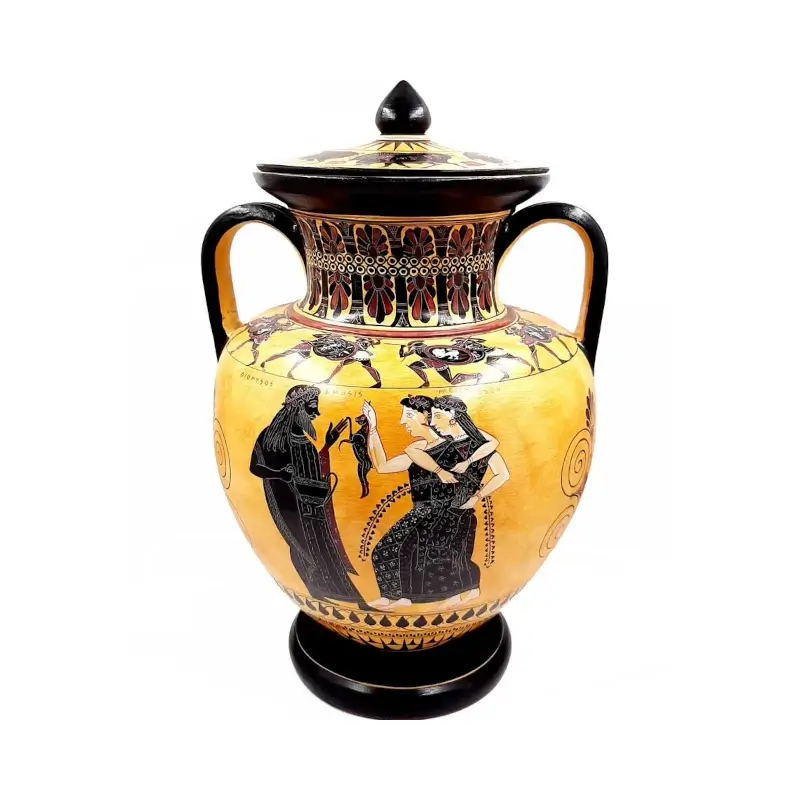Symbolism in Greek decoration

In Greek pottery, each line and figure tells a story. Beyond their utilitarian function, the symbols and scenes depicted on these ancient vessels reveal a rich tapestry of myths, customs and beliefs. This article explores the hidden meaning behind the fascinating decoration of Greek pottery.
The symbolism of Greek decoration
The decoration of Greek pottery is a fascinating field that reflects the complexity of their culture and beliefs. The symbols and representations that adorned these pieces were not merely decorative; they had deep meanings and often told stories or conveyed cultural and religious messages.
Geometric and Natural Symbolism: Geometric patterns, such as meanders, spirals and zigzag shapes, were common, symbolizing order, eternity and the continuous movement of life. Natural motifs, such as animals and plants, also had specific meanings. For example, the owl represented wisdom, associated with the goddess Athena.
Mythological Scenes: Myth depictions were very popular, serving as a way to convey stories and moral lessons. Gods and heroes were depicted in scenes from their famous adventures or in everyday situations, showing their influence on daily life. For example, scenes from the trial of Paris or the labors of Heracles were recurring themes.

This work and the one on the cover are pieces of Ancient Greek Ceramics.
Scenes of Everyday Life: The depictions of daily life on pottery offered a glimpse into the daily activities of the ancient Greeks. This included scenes of banquets, wars, sports and other social activities. These scenes not only served as a reflection of daily life, but also played a role in celebrating Greek culture and traditions.
Religious Symbols and Rituals: Some designs were deeply rooted in religious practices and rituals. For example, images of sacrifices and offerings to the gods, or funeral rituals, were common, reflecting the importance of religion in Greek society.
Representations of Warriors and Battles: Images of warriors and battles not only glorified strength and valor, but could also commemorate specific historical or mythological events. These representations served as a reminder of the ideals of bravery and heroism, central elements in Greek culture.
Fantastic Animals and Power Symbols: Mythological creatures such as the Minotaur, the Gorgons or the centaurs appeared frequently, symbolizing power, the unknown and aspects of human nature. These figures offered a means to explore complex themes such as morality, wisdom and the duality of being.
Marine and Nautical Elements: Given the importance of the sea to the Greeks, marine elements such as dolphins, octopuses and ship scenes were common, symbolizing the connection to the sea, navigation and commerce.

Buy unique Greek reproductions
Fortunately, there are artisans who make reproductions identical to the classical works of art that were made in ancient Greece and are only found in museums, making them affordable.
More about Greek art:


